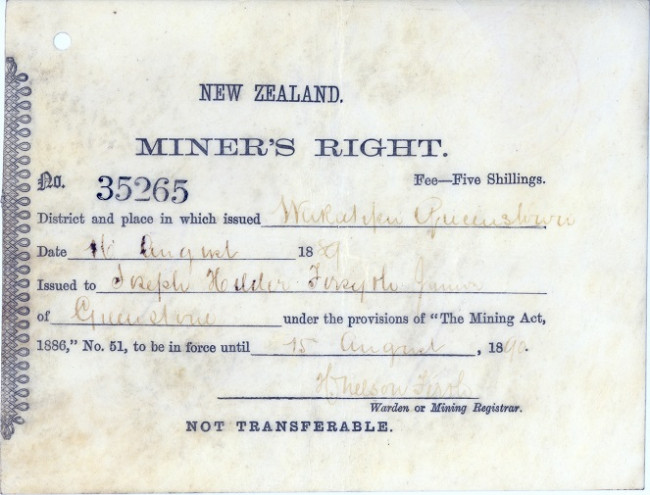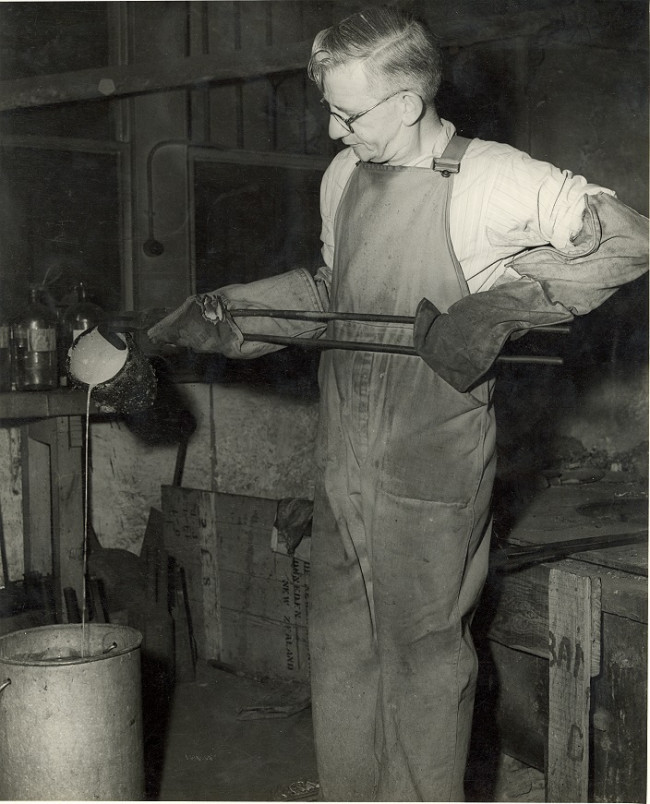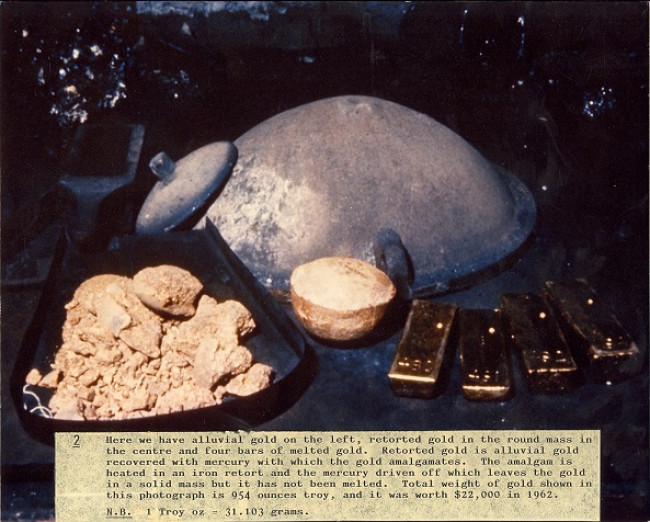Gold assaying
For many years gold mining was a mainstay of the economy. BNZ had several gold melting and assaying rooms at Branches around New Zealand, particularly in the West Coast and Central Otago where raw gold was bought over the counter.
Gold was melted into gold bars and then exported. BNZ exported most of its gold through Hokitka to Melbourne where it was purchased by the Royal Mint.
Initially, agents of the bank were permitted to travel the gold fields, usually carrying pistol for protection. From the late 1880s laws were introduced which forbade the purchase of gold outside of Bank premises. Bullion Assayers were employed on branch staff to determine the purity of the gold offered for sale by ascertaining, by various processes, the proportion of impurities such as lead and silver to the pure gold.
At the time it was necessary for an Assayer to be qualified. BNZ staff member Mr Stewart Inglis joined BNZ at Thames in 1925 and completed his assaying exams at the Thames school of Mines in 1926. He was appointed an Assayer of Gold by the Governor General of the day, Sir Charles Fergusson in 1928. Inglis worked as an Assayer at Thames until 1933 when he transferred to BNZ Takapau.
The banks last assayer was Mr E. W. (Ted) Ashby in Dunedin. Smelting of gold into ingots continued at the Dunedin branch right up to 1962, this was the last known assaying room operated by a Bank in New Zealand. It is thought the last gold purchased by the bank was at Thames on 2 June 1954, the weight was 4 troy ounces and 11 pennyweights. 1 troy ounce was equivalent to 31.103 grams.

Queenstown Gold Miners Right - 1889

Ted Ashby - 1952

The Assaying process - 1962




